Dall-E Print Workshop
When will AI image-generators accurately capture the nuance and detail of mark-making specific to printmaking? Or is printmaking's real-world material translation a distant future for AI's abilities?
Digital Workshop
Date: March 17, 2023, 11:00am CENTRAL
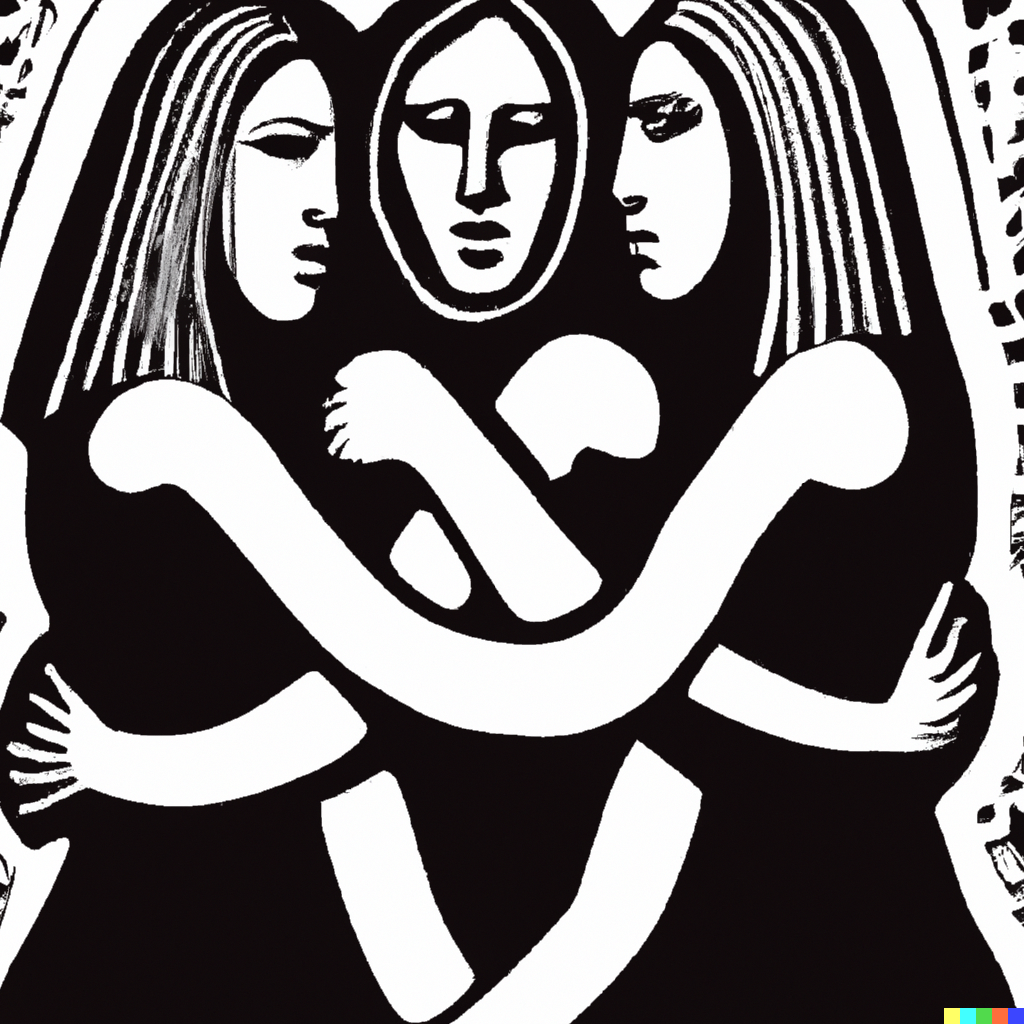
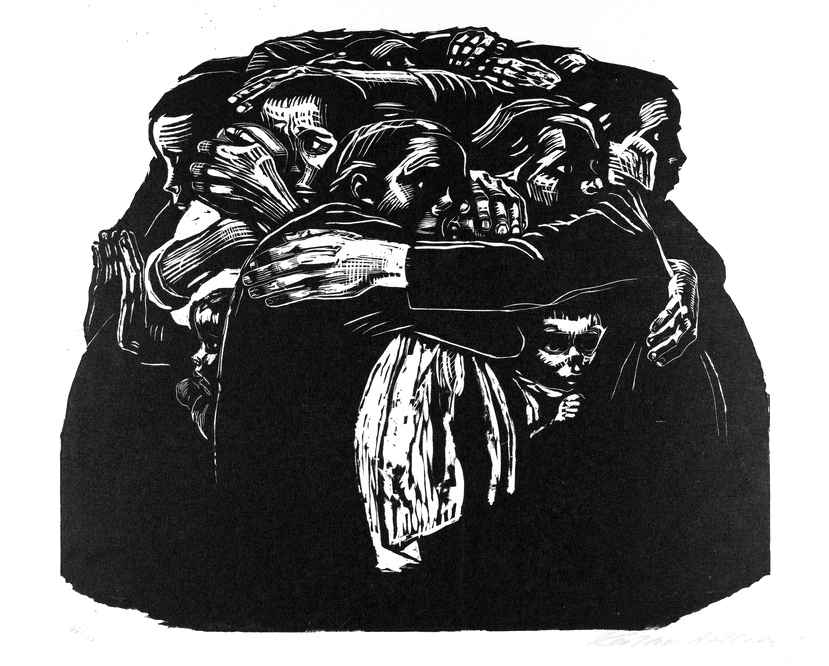
About the Project
DALL-E 2 is a text-to-image system. Any input of a description, short-prompt, grocery list, text message, or gibberish sent to DALL-E 2 will output as an image which aligns surprisingly close with its instructions. While this AI is not the first to generate photos and artistic imagery, DALL-E 2 is able to articulate a request without any preset filters, with more accuracy than others before it, and responds fairly well to the request for a specific medium, be it photo, painting, woodcut, or pencil drawing.
AI experts claim that DALL-E 2 is getting “too close to human-level visual creativity. It can create anything you can imagine – and anything you can’t – from a single sentence.”(1) However, in all the DALL-E 2 generated artworks out there from the DALL-E team, from every-day curious users, or from artistic collaborators, such as the 2022 exhibition “Artificial Imagination” at Bitforms Gallery (2), these images lack a sensitivity to graphic detail which draws many artists to printmaking.
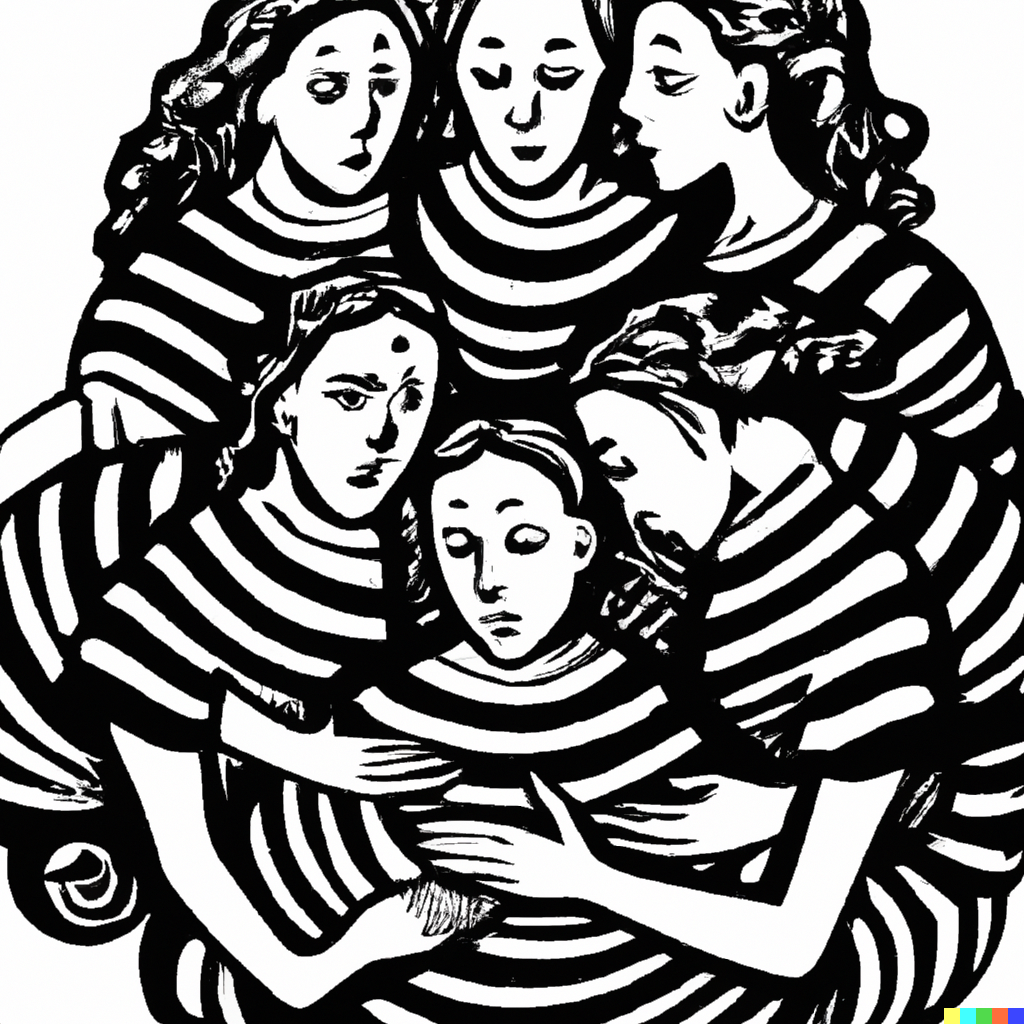
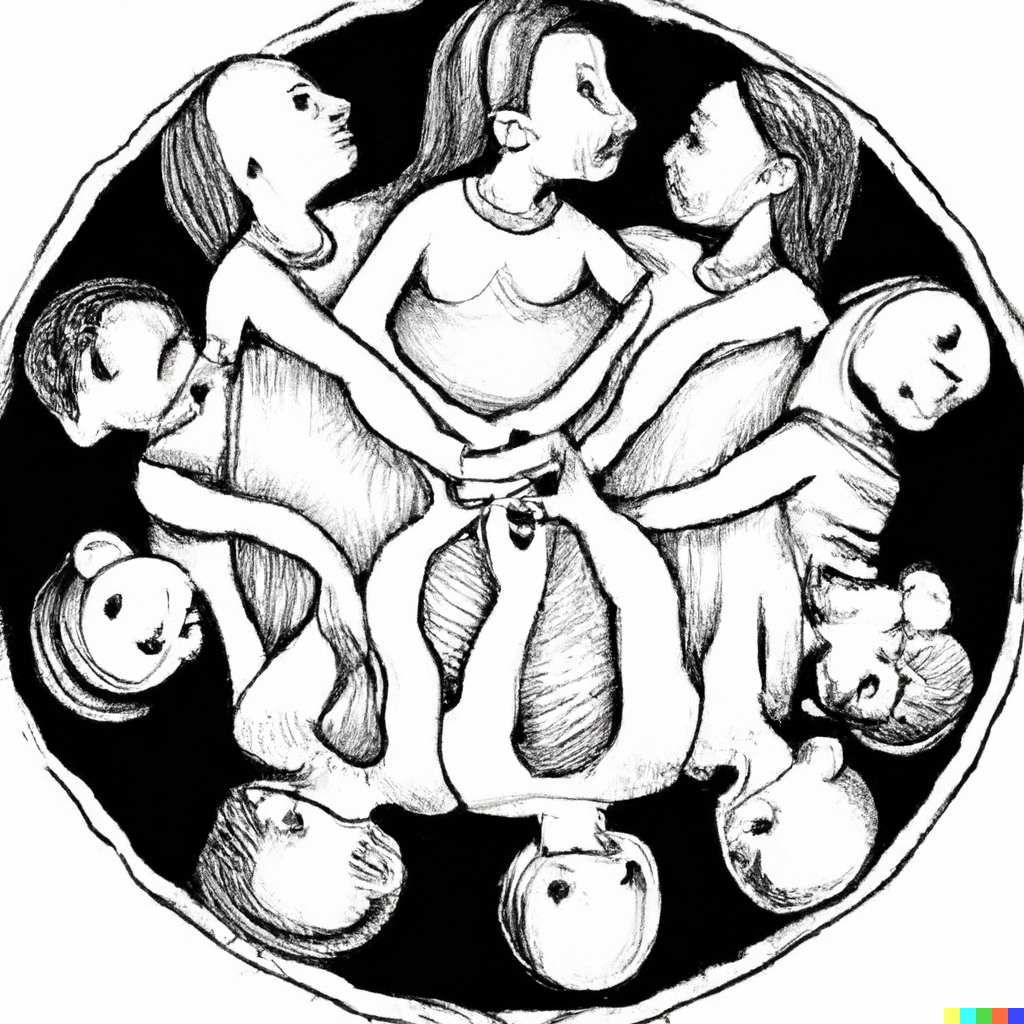
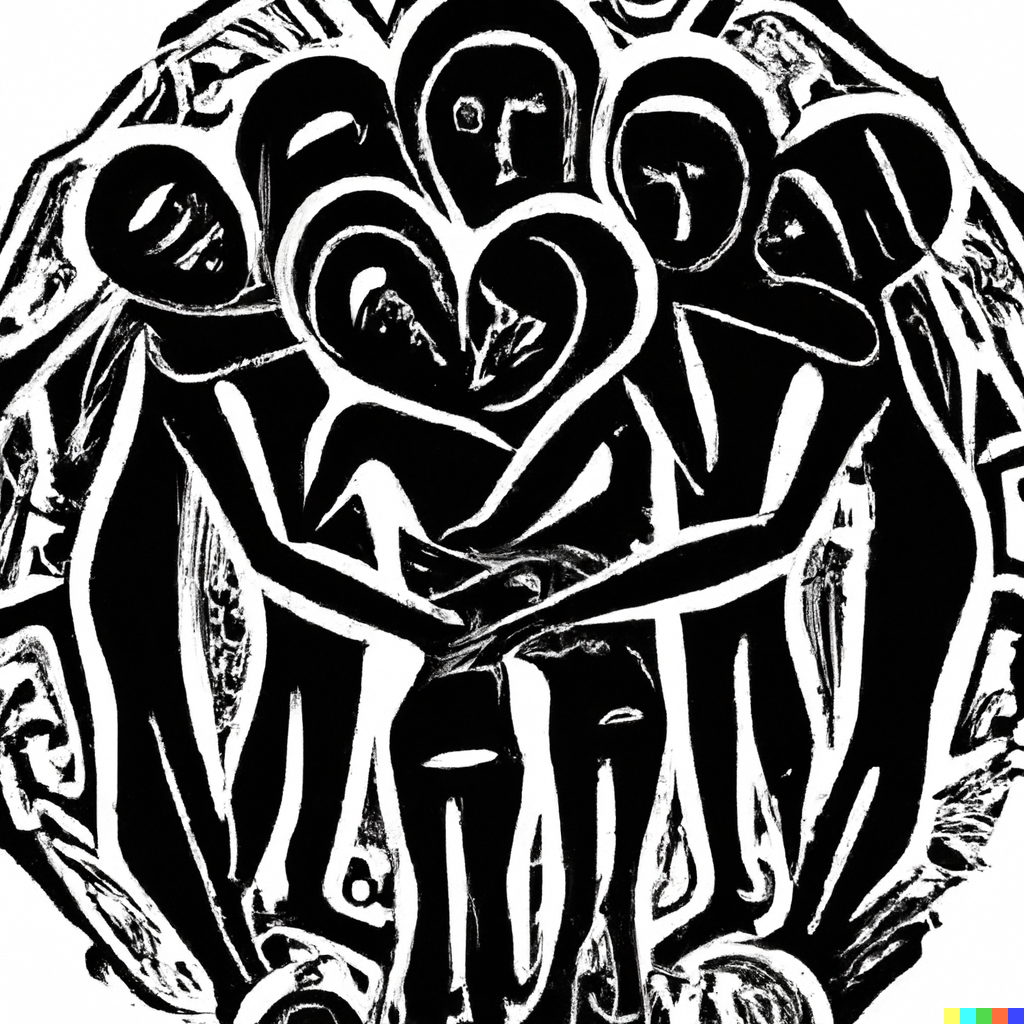
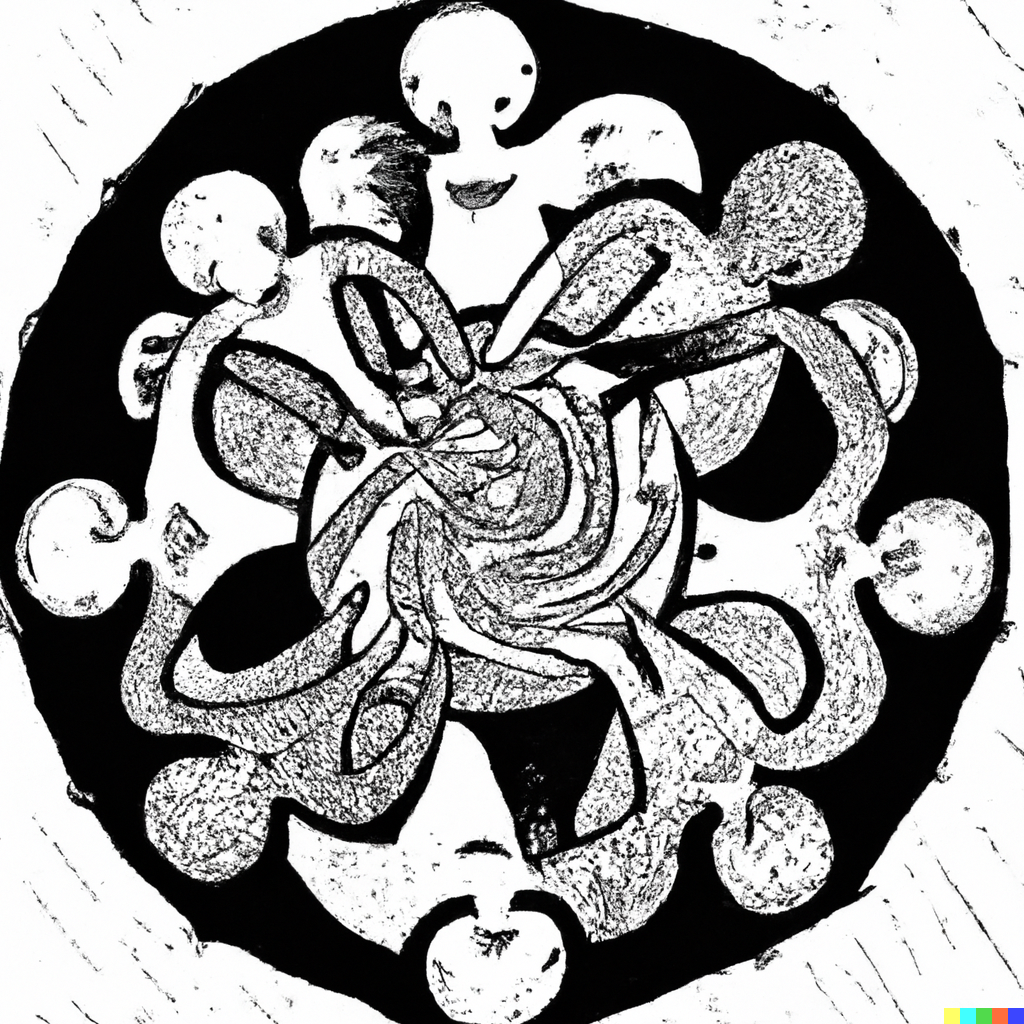
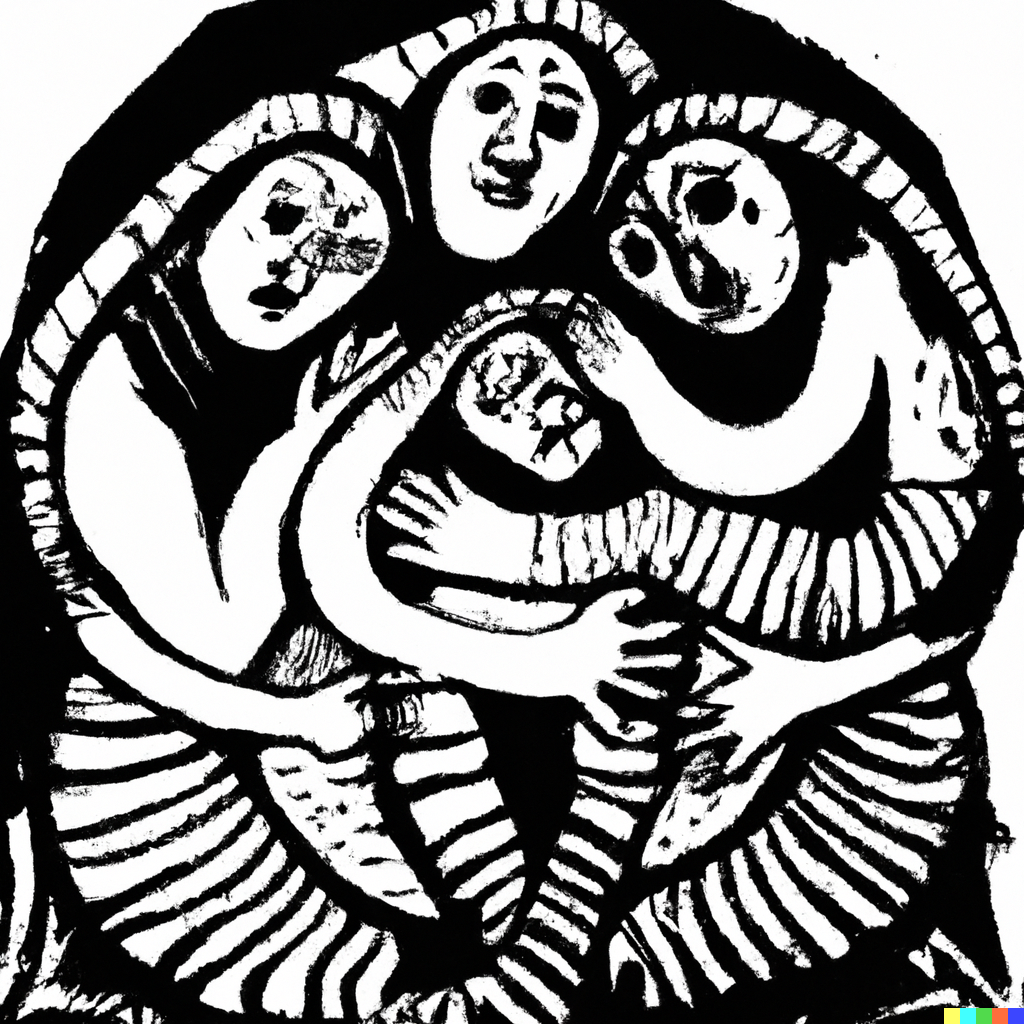
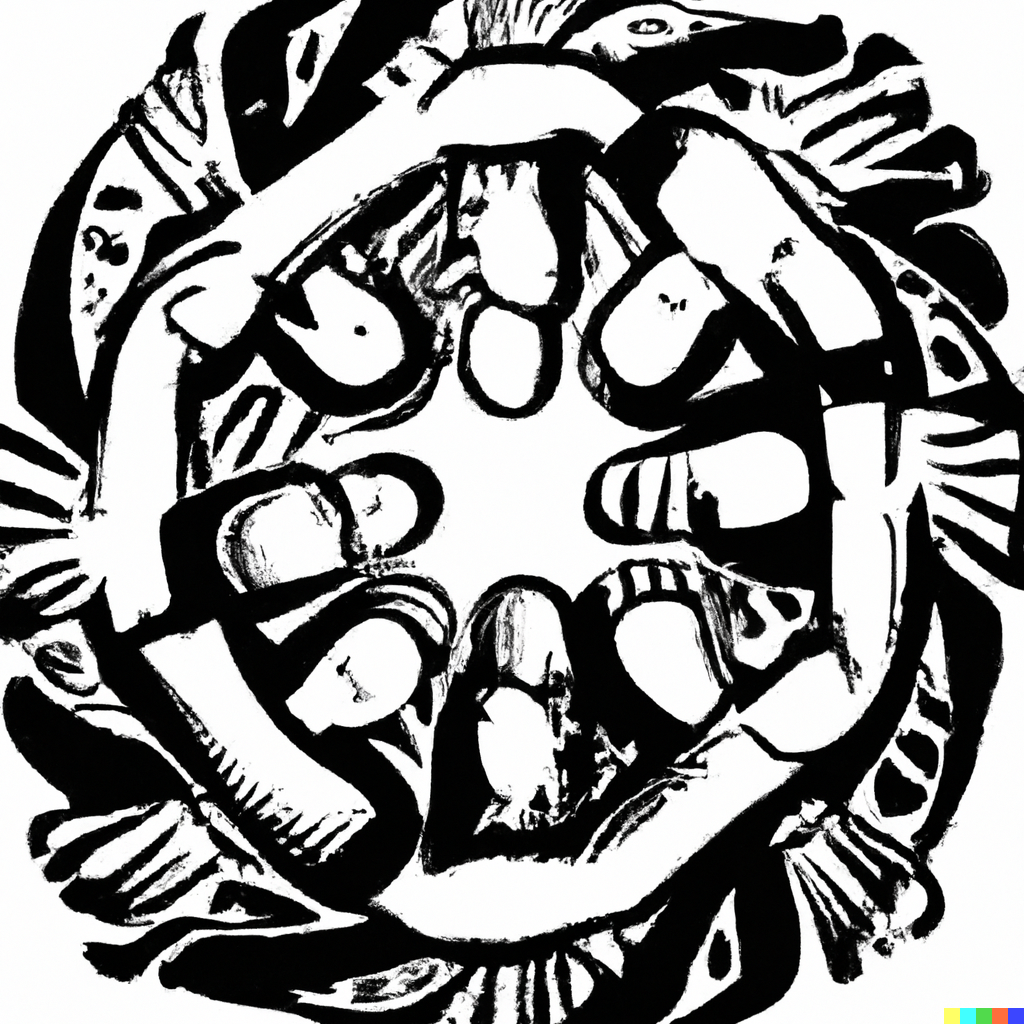
“five mothers huddled tightly in a circle around their children, arms holding each-other in, their bodies becoming like one, drawn with higly expressive mark-making, and rendered as a black and white woodcut” by DALL-E 2
If for example, you asked DALL-E 2 to render in the style of a woodcut, the system understands that many woodcuts are printed in stark black ink on a whitish paper with the white as opening which pushes through the black. However, in the details DALL-E 2’s woodcuts marks could only be of a charcoal drawing or a pencil-rubbing. The marks do not capture how a blade chips the surface of linoleum, cannot recreate the rhythmic spacing of marks across the brim of a hat, as in “Sharecropper” by Elizabeth Catlett. While DALL-E 2 easily and eerily distorts and translate faces into graphic or expressive marks (often to a most disturbing end), the figures do not inspire empathy, express urgency, or show suffering “heaped mountain-high”(3) as embodied in “Mothers” by Käthe Kollwitz.
For this workshop we will discuss AI’s relationship to the history and theory of image and art-making. There are many historic occasions on which mechanical-reproduction caused deep existential crisis for artists and creators alike, such as the Arts & Crafts renaissance of woodcut in the early 1900s as a direct reaction to mass-produced lithographic advertisements. Questions of what makes analog vs. digital, mechanical vs. hand-made art good, meaningful, or beautiful will be explored through art-theory and digital journalism such as the recent book “The Future Is Analog” by David Sax.

"The Mothers" (Die Mütter), Käthe Kollwitz 1922–1923
In September 2022, OpenAI made its artificial intelligence art-generator “DALL-E 2” publicly available. For this workshop we will employ DALL-E 2 and other AI art-generators as our master-printer and use our best language skills to challenge its ability to produce a print. We create a suite of collaborative, print-inspired AI images to used as inspiration for actual prints.
- Romero, Alberto. “Dall·E 2 Will Disrupt Art Deeper than Photography Did.” The Algorithmic Bridge, Medium, https://betterprogramming.pub/dall-e-2-will-disrupt-art-deeper-than-photography-did-b900b52c1ea2.
- Benzine, Vittoria. “In Pictures: Dall-e Makes Its Gallery Debut in a Show Where All the Works Were Created with an Assist from A.I.” Artnet News, 14 Nov. 2022, https://news.artnet.com/art-world/in-pictures-dall-e-makes-its-gallery-debut-in-a-show-where-all-the-works-were-created-with-an-assist-from-a-i-2208441.
- Mahler, Luise. “Käthe Kollwitz: Moma.” The Museum of Modern Art, https://www.moma.org/artists/3201.